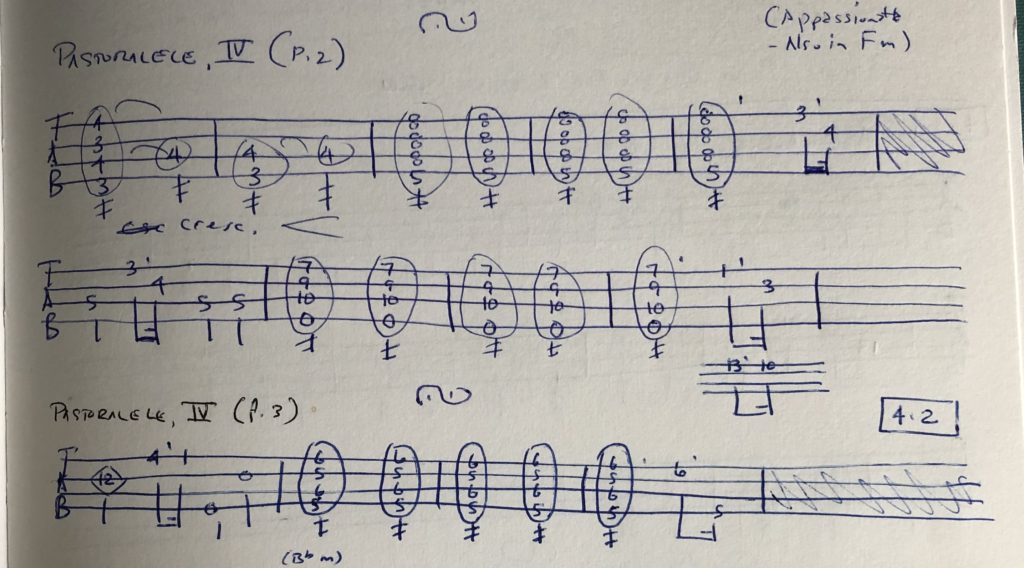Denver–June 18, 2019. Whenever I hear thunder, I think of Beethoven’s Pastorale. During a typical Denver summer, there are a lot of noisy, dark afternoons. In the morning the sun bakes the snowpack on top of the Rockies west of here. The heat loads up the clouds with moisture and they develop into dark thunderheads as they pass eastward over Denver and journey toward the Great Plains.
Yesterday afternoon a storm was brewing as I began to film the third installment of Beethoven of the ‘Ukulele, so I decided to demonstrate a little bit from my transcription of the Pastorale’s fourth movement, which is, for me, maybe the most convincing musical depiction of a thunderstorm ever composed.

Here’s the interesting thing about Beethoven’s sixth symphony: It’s program music. What that means is it’s not music for its own sake. It’s music that means something other than just itself. You could listen to it without knowing what it’s about, but it’s even more interesting if you know what the composer intended when they wrote it.
Beethoven gives us lots of clues as to what the music of the sixth symphony means. The first clue is in the subtitle of the symphony itself: “Pastorale”. This is derived from the word “pastoral”, which refers to the countryside. Often, it’s specifically associated with shepherds and their flocks. (By the way, maybe you’ve gone to a church that had a pastor. Did you ever wonder where that word came from? Well, pastors are often referred to as the shepherds of their flock [i.e., their congregation]! Mind. Blown.)
Consider that, for purposes of this project anyway, Beethoven is our pastor and we are all members of his ‘Ukulele congregation!
I’m not sure of the reason for this, but when the “e” is added to the end, the word then refers to a musical composition that is associated somehow with the countryside. Many composers before Beethoven wrote pastorales, including Beethoven’s favorite composer, George Frideric Handel.
As you might expect from the subtitles of each of the movements, Beethoven was indeed writing music specifically about the country. The Pastorale symphony has five movements, and each movement has its own programmatic subtitle (I’m giving a loose English translation here):
I. Awakening of joyful feelings upon arriving in the country.
II. Scene by the brook.
III. A merry gathering of village folk.
IV. The storm.
V. Shepherd’s song of thanksgiving after the storm.
So, there you have it: program music.
Progress on the Pastorale(le) project so far:
The goals for this project are quite ambitious. These are the two main objectives right now: 1) To give anyone in the world who wants to learn to play Beethoven’s Pastorale symphony on the ‘Ukulele the opportunity to do so; 2) To learn to play the piece myself.
To those ends, here’s what’s happened this week:
Episode 3 of Beethoven of the ‘Ukulele posted on YouTube: Includes a performance of pages 2 and 3 of the Pastorale symphony on ‘Ukulele.
Email list: Be a part of Beethoven’s ‘Ukulele Flock! 🙂 Get on the list and you’ll receive a new page of the Pastorale(le) score (in ‘Ukulele TAB!), as well as being the first to know about other cool things happening with the project.
Preparing the score for publication: The process of converting my handwritten tablature into Sibelius (my notation software of choice) has begun. I’ll be sending you this in addition to my handwritten notation.
Social media: Information about the project is being sent out in tiny bits to my social media channels: Instagram (music-only video snippets), Twitter and Facebook. Feel free to visit if you are active on these platforms.
Thanks for your support so far!
all the best to you!
-James